Unpretentious and hardy blackberry varieties Agavam has long won the love of many gardeners. This is a yield frost-resistant culture with sour-sweet medium-sized berries.
At the same time, the modern market for new hybrid blackberry varieties allows you to choose shattered varieties of culture with larger fruits and improved flavors of berries. But not all gardeners are in a hurry to replace the proven blackberry variety with new-fashioned cultural hybrids. So what is the secret of the Migabam blackberry variety? What are the advantages and disadvantages of this garden culture? All the secrets of growing blackberry agaves, recommendations and advice of gardened practitioners, are read in this selection of material.
Blackberry Agavam, Plate Features
- Agavam blackberry varieties have been bred over 100 years ago, in the middle of the 19th century, American breeders. The exact origin of the culture is unknown, however, it was found that the "progenitor" of the variety was a wild blackberry form. In Russia, the Blackberry Agavam varieties were officially included in the State Register in 2006, after which he received positive recommendations of cultivation throughout the country.
- During the period of elimination and active cultivation of the Agavam, the variety was considered one of the best at that time. Berries plants were relatively large and possessed good taste. For more than 80 years, this blackberry variety was widespread in Europe and America, and was grown as a popular industrial culture.
- Blackberry shoots are beginning to be froning for the 2nd year of life, and by autumn die away the same as the raspberry. But, unlike its "relatives", raspberries, a white fit, on which fetal slices are placed, is edible.
- Blackberry is a delicious and useful berry, which is used in fresh or recycled. From it prepare jam, kissel, juice, marmalade and other sweets. Shrub leaves are suitable for brewing tea. The beneficial properties of blackberry fruits are due to the content of pectin substances, sugars, organic acids, vitamins.
- Blackberry blooms lush and is an excellent honey. Due to the high splashing gabitus shrub, blackberry scrubs are used to decorate arched structures or garden gazebo.
Blackberry Agavam, plant description
- Blackberry - a typical representative of the family of pink from the kind of raspberry. A variety of blackberry Agavam belongs to a bushes of blackberries, often referred to as "Kumanika".
- Agavam grade forms a powerful and well-branched bush with thickened upright shoots and drooping tops. In height, the plant is capable of reaching 2-3 meters. Young shoots on the shrub easily distinguish from mature, as they are thinner, gently green. Last year's holidays of blackberry brown-red color are covered with easy insertion. Over the entire length, the shoots are densely covered with raised sharp spines.
- Corrugated pubescent leaves have a typical shape for blackberry when all plates diverge from one point and narrow to the edge. The leaf plate below, like the stem, is covered with spiners, but smaller and thin. The leaves are tightly held on the shoots, so even with the onset of the first frost bush, the first time remains completely limp.
- The characteristic feature of the varietal varieties is the ability to actively form the root piglery, to deal with which is very difficult. At the same time, the gardeners often do not help artificial limiters in the form of a slate or metal sheets.
- Blackberry blooms in the late spring - early summer, in May-June. Naturally, in southern regions, bloom comes 1-1.5 weeks earlier than in the north. The blooming blackberry bush is completely "riveted" with snow-white flowers and looks at this time very decorative and elegant. Flowers have a large plant, collected in the inflorescence of a brush.
- Blackberry fruiting Agavam occurs on last year's growth. The fruits are slightly pubescent, iscin-black and mid-size (weighing about 4-5 g). On the shape of the berry, blackberries resemble a truncated cone or incorrect oval. Fruit short, barbed. Separately taken fruit brush consists of 15-20 berries of different degrees of maturity.
- "Agavam" refers to varieties with average maturation and stretched (in time) fruiting. Blackberry fruits ripen gradually, unevenly. The bulk of the berry reaches technical ripeness about mid-August. The duration of the fruiting of a healthy blackberry shrub is about 15 years.

Advantages and advantages of Blackberry Agavam
- Agavam grade is recognized as one of the most frost-resistant and unpretentious blackberry varieties. The plant perfectly winter without shelter both in regions with temperate climates and regions of the middle strip of Russia. Blackberry Agavam transfers short-term decrease in temperature to -40 0C, fruit kidneys are damaged at -30 0C. Due to increased frost resistance, the variety is used by modern breeders in the process of removing new blackberry hybrids.
- Blackberry Agavam - undemanding culture capable of grown on any type of soil.
- Berries of this blackberry variety are dense and well tolerate transportation. The taste is pleasant, sour-sweet, the aroma is thin, not shown. It is important to collect a harvest on time, as the fun becomes soft and watery.
- High yield of culture is provided by dense boarding of blackberry bushes. The average yield rate is 100 c with 1 hectare, from one bush 5-15 kg of berries.
- The plant has high shades, so almost most blackberry berries mature even where there is not enough light.
- Agabam is considered a sufficiently drought-resistant plant, which can have been able to do without water for a long time.
- The plant is not afraid of moisture stagnation, steadily for winking, and can grow both in lowlands and on the elevation.
- Sort of sammost, i.e. Capable to self-pollution, and therefore, which does not require growing among other "varieties of pollinators".
- This blackberry variety is resistant to most typical pink diseases: anthracnose, rust, stem cancer.
- Under favorable conditions, blackberry bus will be fruitful for 15-20 years.
- Blackberry shrub easily multiplies and extends to the site due to the rapid development of the root row.
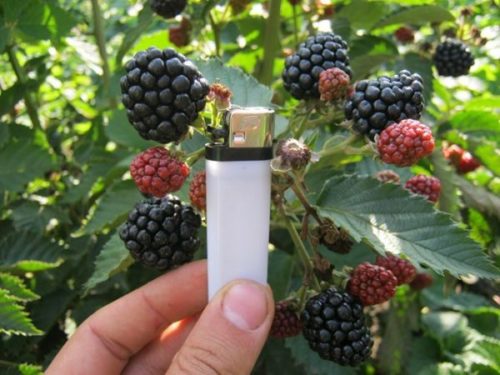
The benefits of blackberry Agavam
Blackberry berries have a number of useful properties for the human body:
- Are a natural antipyretic agent.
- Reduce headache and strengthen immunity.
- Normalize the work of the digestive system and metabolism.
- Strengthen brain vessels, activate mental processes, improve memory.
- Reduce the amount of blood sugar and are shown to eat people suffering from diabetes mellitus.
- Help to cope with insomnia.
- Strengthen the cardiovascular and nervous system.
In addition to berries, traditional medicine is rich in recipes for the healing use of blackberry leaves. The decoction of the leaves is an effective campling and diuretic, helps strengthen the nervous system and cope with stress.
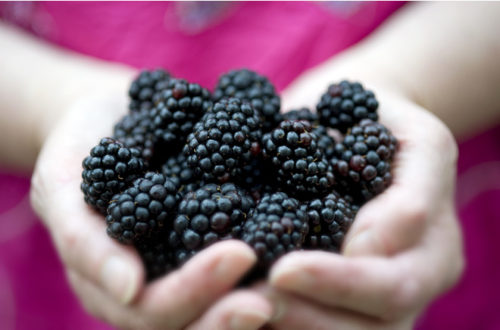
Disadvantages of blackberry Agavam
- Blackberry fruits adversely respond to a long-term heat: they bump and lose not only an attractive appearance, but also taste. Therefore, in the arid southern regions, blackberry bush is better to plant in a half.
- The fun berries of blackberries not only do not suit the transportation, but also lose their taste, become watery and fresh. Not dissociated fruits are also unsuitable for use: they are sour, with a herbaceous aftertaste.
- The disadvantages of the care of the shrub are due to the large number of sharp and curd barns. When harvesting, it is easy to arm your hands, and in the northern regions where you need to cover the vacuum on the winter, this feature delivers especially much trouble.
- In the latest form, like most other blackberry varieties, berries are stored not long.
- With insufficient moisture, blackberry berries are minor.
- The formation of the root row and the rapid spread of the blackberry bush can lead to an uncontrolled "settlement" of the plant throughout the plot.

Blackberry Agavam, reviews
Reviews of the gardeners grown by Blackberry Agaves are somewhat different and do not have a total unequivocal assessment.
- Some consider plant with a good acquisition, as it does not require special care, is distinguished by high frost and drought resistance. With such minimum labor costs, it is possible to collect sufficiently good yields of berries. And although they are not so big and sweet, as modern, repair and sophisticated varieties, the eating fruits of the Agabam have good taste and can be easily transported. At the same time, the bush arms independently and does not require additional breeding.
- According to other gardeners, the ancestor of wild blackberries, Agabam, and remained half a wild culture: with mediocre branches of mediocre taste, long spiny branches and aggressive growth in terrain.
Proponents of the variety have long adapted to work with a shrub and celebrate the main nuances, the fulfillment of which will greatly facilitate the cultivation of blackberries: in time to collect ripe berries, not allowing their overheating; annually cut a shrub or install special trellis so that it is convenient (and not high) to collect berries; Remove root pigs if the plant breeding is not required.
In addition, many gardeners do not recommend large-scale cultivation of this variety in the southern regions with hot and dry summer. This is explained by the fact that in open areas, blackberry berries are baked, losing both an external presentable species and taste. The only exit for this climatic zone is the cultivation of agaves in a half.
But for regions with cold and harsh winters, frost-resistant varieties "Agabam" can be a real "finding".
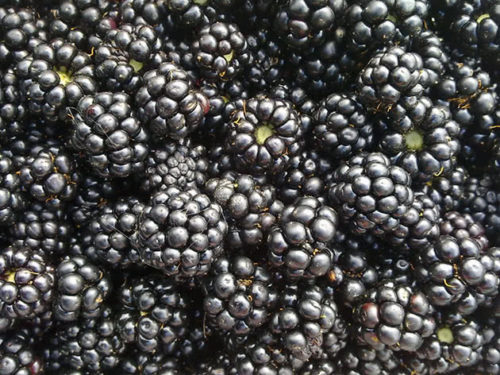
Blackberry Agavam, landing features
Buying blackberry seedlings for landing on its plot, it is important to pay attention to the product view of the young plant: the root of the seedling should be well developed, and shoots - must be flexible, without cracks and damage.
On the eve of landing, saplings are better to soak in water, after which the "boldly" plant plant into the open ground.
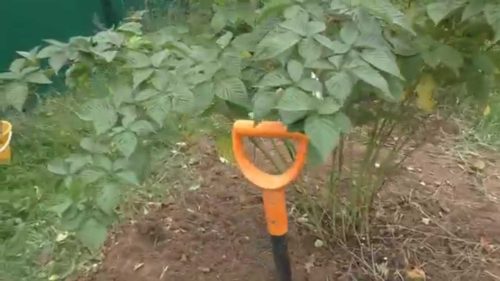
Time and place of boarding blackberries Agavam
- Blackberry seedlings Agavam are planted, as a rule, in the spring, so that the shrub managed to root and adapt in a new place before the winter. If the seedlock was purchased in the fall, it is better to ship it into the ground in a horizontal position, after which it is filled with a thick layer of mulch and hide with nonwoven material. The exception for the autumn boarding of blackberries can be the southern regions, subject to planting seedlings, at least 1 month before the onset of frosts.
- Plot for planting perennials are chosen taking into account its basic needs. Therefore, it is necessary to plant a young plant at a well-lit place or in openwork feud (preferable for southern regions). Blackberry will be able to grow in the shade, but the productivity and taste of berries will be lower than in the sunny section.
- Blackberry roots Agabam are not afraid of shocking, so the plant can be planted in lowlands, where water can accumulate. In the wetland, the culture of growing, will not be able.
- As for the soil, Blackberry Agavam is absolutely undemanding to a certain composition of soil, however, as any other plant is favorably responded to a fertile moistened and drained soil. An excellent option will be lightweight soup or fertile ferrous-podzolic loams with a neutral medium reaction. The acidic soil is better to advance, and in very tight soil - add sand.
Agrotechnology landing blackberry agavam
- The initial stage is the preparation of a plot to landing a long-term culture. For this, the beds are drunk, organic fertilizers contribute (humus, korovyan, etc.) and roll up with robbles. Such preparatory work is best carried out in the fall.
- In the spring, the site is enough to break and proceed to the preparation of landing pit. The boarding point for a seedling of blackberries is prepared at the rate of about 50-60 cm deep and twice as much - in width. A wide spacious pit will provide the optimal development of the branched root plant of the plant.
- On the bottom of the landing pits, the drainage layer is covered (from rubble or broken brick). Then add nutrient layer from fertilizers. For these purposes, organic additives (compost, humid) and mineral complexes (150 g of superphosphate, 40 g nitrogen-potash fertilizers) are used. Such a composition will provide a plant with nutritional elements for the next three years.
- The pit is abundantly shedding with water. In the center of the pit (on a small hollyk), the seedlock is placed, root roots and fall asleep with soil. The root neck of the seedling is plugged into the ground by 3-4 cm, ensuring the protection of replacement kidney from such adverse environment conditions as drought and frost. IMPORTANT, after planting, the ramming of the ground foot so that emptiness is not formed.
- After planting seedlings, the bush watered, and the shoots of the plant cut off, leaving no more than 20-25 cm above the ground.
- The rolling circle after the landing is best to immediately meditate. As a mulch, you can use a varied material: sawdust, chevy, wood bark. Mulch will protect the plant from the drying and appearance of weeds.
- Blackberry seedlings landing scheme can be different: rows or separate bushes, taking into account so that each young plant has to at least 2m 2 Plot. When boarding blackberries with rows, there are no less than 1M interval between the plants.
- Given the development of long shoots of blackberry Agavam, it is important to initially consider the system of tapping a shrub. It can be special supports or tensioners with stretched, from the column to the column, wire in 3 rows. As they grow, the shoots of blackberries are tied up to the support. It is convenient to place such trellis on the border of the site, building, thus, a barbed alive fence.
Blackberry Agabam, Care Rules
The care of Blackberry Agaves is a simple and affordable even inexperienced gardener. Consider key agrotechnical rules for the cultivation of shrub.

Watering and loosening Blackberry Agavam
- The blackberry of the Agavam variety is considered a drought-resistant culture, but that the berries do not become smaller and remain tasty - the shrub needs regular abundant irrigation.
- The average irrigation rate of an adult shrub is about 2-3rd buckets weekly. Moreover, immediately after the landing, the seedlock is watered more often (2-3 times a week), as the soil dried.
- After irrigations, the rolling circle should be exploded so as not to form a dense crust that prevents the aeration of the soil.
- During the flowering period, the looping procedure is better replaced by mulching. The mulch is suitable peat, humid, sawdust or beveled grass.
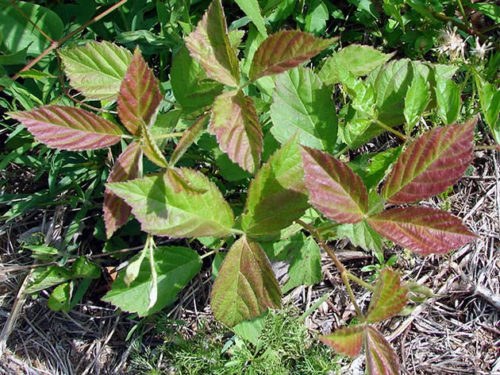
Up. Blackberry Agavam
- If the recommended organic and mineral fertilizers have been added when landing into the ground, the first three years the shrub will not need additional feeding.
- Then, as it grows, the plant should be fertilized. In the spring, during the dissolution of the leaves, - nitrogen-containing complexes; in summer, during flowering - complex mineral fertilizer; After harvesting - phosphorus-potash feeding.
- Experienced flowers are recommended in the summer to spend a spraying of shrubs with special biostimulants: "epic" and "zircon". These drugs stimulate the main life processes of the plant, rejuvenate the old shoots, increase the number of productive bandages, reduce their sprinkling. If the leaves of blackberry wishes (at the same time, the bodies remained green), and chelates (microfertilizers) add to the proposed stimulants, allowing to overcome the development of chlorosis. The procedure for processing shrubs by biostimulants is carried out for 2 weeks, alternately changing the above-mentioned drugs.
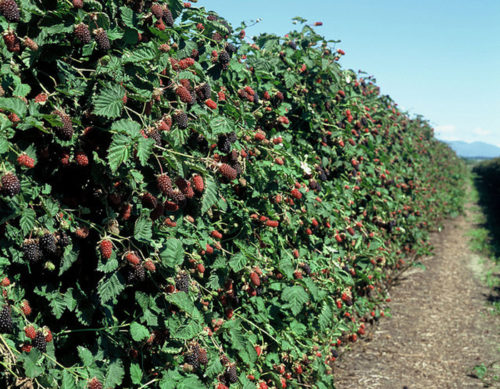
Fighting pests and blackberry diseases Agavam
- "Agavam" is a highly steady variety in relation to most diseases and pests.
- Occasionally, the blackberry can be exposed to the invasions of the larvae of the May beetle or the Medveda (Kapustyanki), which damage the roots of the plant. In order to scare the pests, a strongly smelling plants are prudent near the black-based shrubs: velvets or calendula. Essential oils containing in colors, very effectively scare away unwanted "guests".
- The prophylactic measure of disease appearance will be the annual spraying of blackberry shrubs with drugs containing copper.
- In order to avoid the appearance of typical of the family of pink diseases, it is not necessary to plant next to the blackberry raspberry or strawberries.
Babe and trimming of blackberry agavam
- The first few years of Blackberry Agavam does not require any trimming, but, with age, shoots are lengthened and require gardener intervention.
- Approximately the 4th year of the bush begins to produce it.
- Blackberry trimming Agavams spend three times: in spring, summer and autumn.
- The first, spring (sanitary), pruning provides for the removal of sick or damaged shoots. In the process of sanitary trimming, there are 4-6 healthy and well-developed vines on each blackberry bush. Live and strong escape has a dense structure, a brilliant brown bark. Such a moderate number of shoots will be conveniently placed on the choplet, without causing thickening and shading another vine.
- The second trimming or piping is carried out in about the middle of the summer. At this time, the tops of the side shoots of substituents are plugged at 7-10 cm. Thus, it is possible to stimulate branching, and hence fruiting the next year of the bush of the shrub.
- Autumn trimming assumes the removal of all sprouting escapes to the ground level.
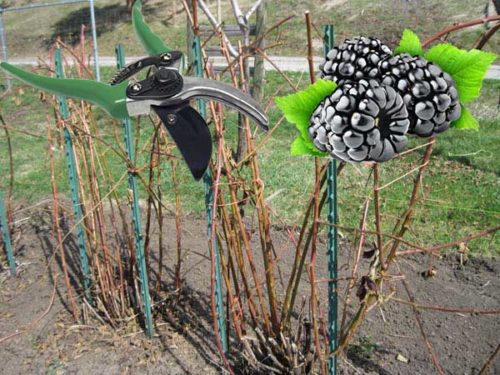
- As for the border of blackberry shoots - this is a mandatory agrotechnical reception for such long, like a variety "Agavam", branches. Shrub's scrubbits are evenly distributed on the horizontal support on one side of the choplaresters and the interval of 20-25 cm from each other. Young shoots are tied up in the same way, only on the other side of the Trelliers. Such a simple admission can significantly facilitate the collection of blackberry harvest.
- In addition to trimming and garter, "Agabam" actively forms the root piglery, which should be removed annually to control the spread of the plant on the site.
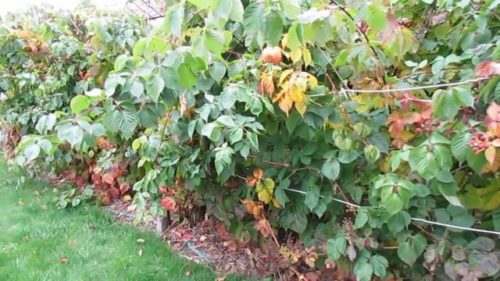
Preparation for Winter Blackberry Agavam
- In the southern regions, the blackberry of this variety is not covered for the winter, the plant perfectly tolerates the winter. With strong (from -25 0C and below) frosts sufficiently sketch on the snow bush and the plant will be reliably protected from freezing.
- In the northern regions, blackberry is better to hide for the winter. For this, a variety of shelters are prepared: the frames in the form of a hut from the observer material, covering the branches on the chopler with burlap or agrofiber.
- Another way is to connect the remaining young shoots of blackberries into a bundle after trimming, to jump them to the ground and tie up the sleepers at thenime, where to sprinkle them with soil, dry leaves or sawdust. All manipulations should be carried out before the onset of cold weather, until the shoots are flexible and unreserved.
Blackberry reproduction Agavam
- To propagate the Blackberry Agavam in its garden will not be absolutely no work, since the culture will independently "sprawl" by the site due to the formation of root offspring. If you need to plant blackberry seedlings to a new place - it is enough to dig up the root piglets (or root cuttings) and put it on the desired area. Such a seedling is easily caring and quickly rooted.
- The second way of reproduction of blackberry rooting of cuttings (the top of the shoots) or chains. Long shrubs scrubbits, often, is seriously bent for rooting, so this technique is rarely used by gardeners.
- The seed method of reproduction is a time-consuming and long process, also a little common among dachens. Blackberry seeds before landing require a mandatory 2-month stratification, planting in a loose nutritious substrate and thorough daily care for seedlings.
Problems when growing blackberry aghaws
According to the reviews of many gardeners, Blackberry Agavam is a rustier and unpretentious plant. But, the wrong conditions of detention, the disturbed regime of the feeding and fertilizers can lead to the development of certain diseases. Consider the most typical problems arising in the cultivation of blackberry agaves:
- Slow growth of shoots; Light green leaves, which fall out already in the middle of summer; Shredding berries indicate a shortage of such an element as nitrogen. With an excess of this element in the ground, brown spots may appear on the leaves, which over time are folded and falling.
- Phosphorus deficiency provokes the fusion of leaves, which begin to black and fall; Blooming and aging of berries occurs with a delay. Excess of phosphorus causes necrosis of leaves and their subsequent focus.
- When the blackberry leaf plate is starting to pale (the development of chlorosis), the top kidneys die, and in the berries there are depressions and traffic jams - the plant lacks such a nutrient element as a boron. The overabundance of boron causes chlorosis between the leaf veins, which begin to twist and fall.
- A bright sign of lack of magnesium is "redness" and the foaming of leaves, preserving, with green veins. An excessive amount of magnesium leads to the darkening of the leaves, which begin to shrore and gradually die.
- Calcium deficiency is manifested in the following features: the tops of the shoots dry, the young leaflets acquire a yellowish tint, while the old remains greens. Excess calcium leads to no less "deplorable" consequences: the leaves begin to grow "fan", shoots gradually die away.
- The lack of zinc is manifested by changing the color of the leaves on the bronze color, grinding and deformation of leaves and fruits. Excess zinc provokes the elimination of the top kidneys, the blackening of veins on the ebber leaves.
Thus, complications in the development of blackberry shrubs can be caused by both a shortage and an overspendent feeder used.
It is important to remember that not dosing and uncontrolled fertilizer can cause significant damage to the plant.
So, landing and care for blackberry agaves does not represent almost no difficulties. Having wild "ancestors", this blackberry variety inherited endurance and vitality to cultivate the garden blackberry in almost any regions of the country. Drought-resistant, cold-resistant, non-disease and pests, the yield and stress is a steady variety "Agavam" - the old grade of blackberry proven by gardeners. The attitude to this variety by the gardeners is very ambiguous, therefore, before deciding to "start" agaves on its site, it should be carefully examined by all the advantages and disadvantages of this garden culture.

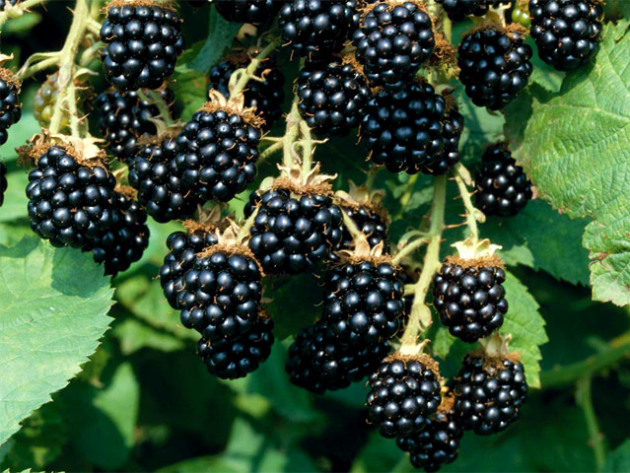
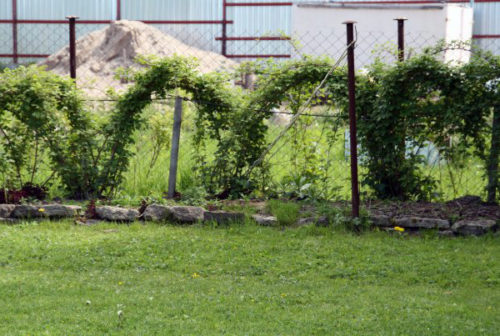
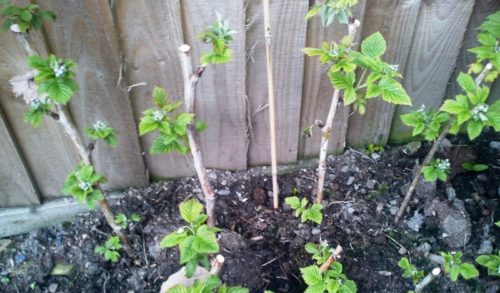


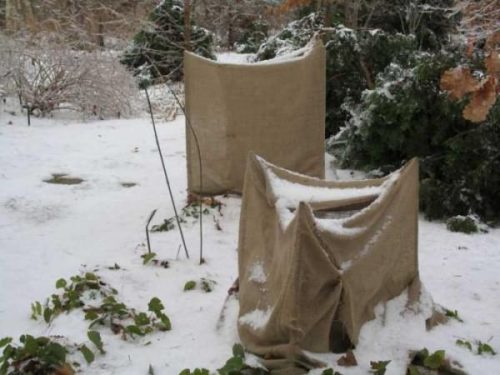

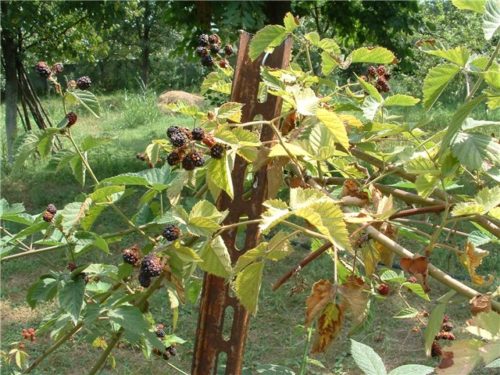
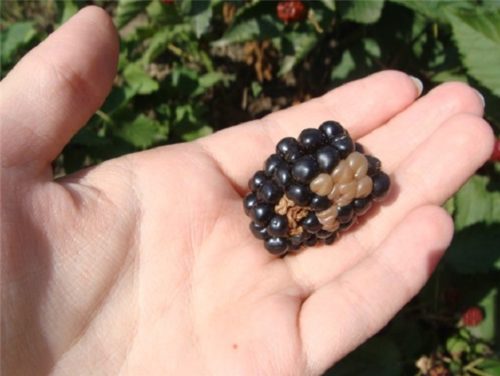
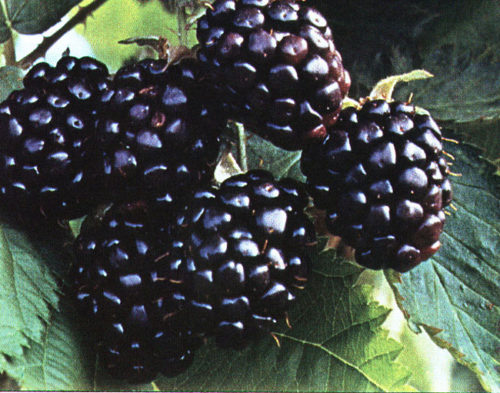
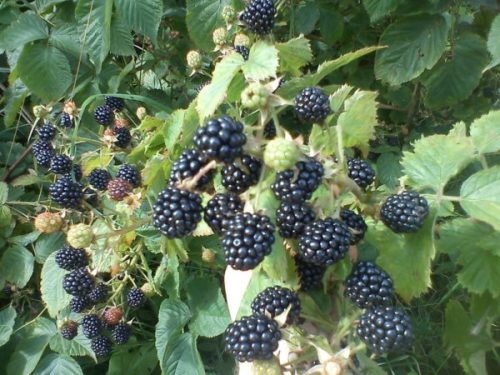


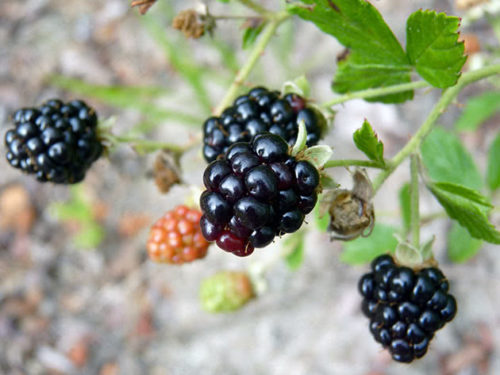
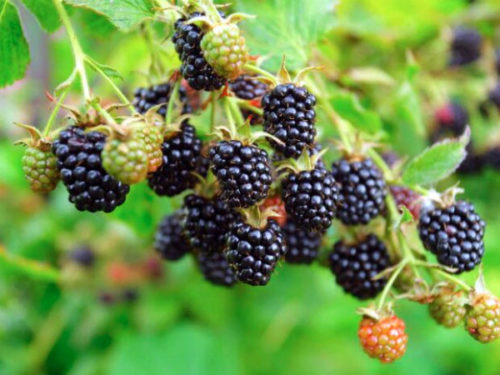












 Start a discussion ...
Start a discussion ...